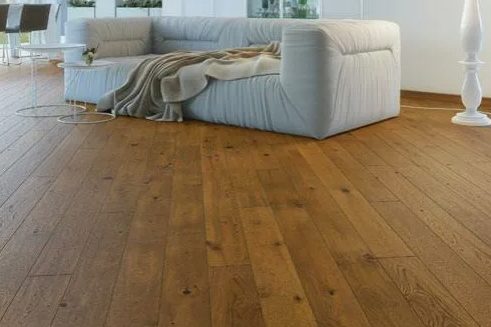Hardwood floors bring elegance and durability to any home. However, to maintain their beauty and integrity, periodic refinishing is essential. Knowing how often to refinish your hardwood floors can save you money, effort, and unnecessary wear over time.
This blog will guide you through the factors that influence refinishing frequency, how to recognize the signs that it’s time to refinish, and practical tips to prolong the life of your floors. Incorporating refinishing as part of an “all in one remodeling” approach can enhance your home’s overall look and feel.
What Affects Refinishing Frequency?
The timeline for refinishing hardwood floors isn’t one-size-fits-all. Various factors determine how often you need to refinish, including:
1. Foot Traffic
- High-Traffic Areas: Spaces like hallways, kitchens, and living rooms may need refinishing every 3–5 years due to frequent use.
- Low-Traffic Areas: Bedrooms or guest rooms might only require refinishing every 7–10 years.
2. Type of Wood
- Softer Woods (e.g., Pine): More prone to scratches and dents, requiring refinishing more frequently.
- Harder Woods (e.g., Oak or Hickory): Durable and resistant to wear, needing less frequent refinishing.
3. Finish Type
- Water-Based Polyurethane: Wears faster, often requiring refinishing every 3–5 years.
- Oil-Based Polyurethane: Offers a longer-lasting finish, needing attention every 7–10 years.
- Wax or Penetrating Oils: Require maintenance or touch-ups more regularly.
4. Maintenance Habits
Proper care and cleaning significantly impact the longevity of your floor’s finish. Regular maintenance can delay the need for refinishing.
Signs It’s Time to Refinish
Recognizing the signs that your hardwood floors need attention can prevent further damage and preserve their beauty.
- Visible Scratches and Scuffs: Heavy foot traffic or dragging furniture can leave marks that dull the surface.
- Fading or Discoloration: Exposure to sunlight often causes uneven fading, especially in rooms with large windows.
- Water Damage: Dark spots, warping, or cupping indicate that water has penetrated the wood.
- Lack of Shine: If cleaning no longer restores the floor’s luster, the finish may be worn down.
How to Prolong the Time Between Refinishing
With proper care, you can extend the lifespan of your floor’s finish and reduce the frequency of refinishing.
1. Use Rugs and Mats
Place area rugs or mats in high-traffic zones to minimize wear. Use non-slip, breathable mats to avoid trapping moisture underneath.
2. Protective Furniture Pads
Install felt pads under furniture legs to prevent scratches and dents when moving items.
3. Regular Cleaning
- Sweep or vacuum regularly to remove dirt and debris that can scratch the surface.
- Use a damp mop and hardwood-safe cleaner for deeper cleaning.
4. Maintain Humidity Levels
Wood is sensitive to humidity fluctuations. Keep indoor humidity between 35–55% to prevent warping or gaps.
5. Avoid Harsh Chemicals
Use cleaning products designed for hardwood floors to preserve the finish and avoid damage.
The Importance of Timing
Delaying refinishing too long can lead to deeper damage that requires more intensive repairs or even replacement. On the other hand, refinishing too frequently can thin the wood unnecessarily. Striking the right balance is key to maintaining the beauty and durability of your hardwood floors.
FAQs
Can refinishing too often harm hardwood floors?
Yes, over-refinishing can thin the wood, especially with aggressive sanding. Only refinish when necessary.
What’s the difference between refinishing and recoating?
Recoating involves applying a new layer of finish without sanding, ideal for minor wear. Refinishing includes sanding and is used for significant damage.
How can I tell if my floors need refinishing or just a deep clean?
If the finish is intact but dirty, a deep clean may suffice. If the floor has scratches, fading, or stains, refinishing is likely required.
Conclusion
Knowing how often to refinish your hardwood floors depends on factors like wood type, traffic, and finish durability. By staying attentive to signs of wear and adopting proactive maintenance habits, you can prolong the time between refinishing and keep your floors looking their best.
When paired with “all in one remodeling” services, floor refinishing becomes part of a holistic approach to enhancing your home’s aesthetic and value. Whether you’re tackling high-traffic areas or rejuvenating less-used spaces, a strategic refinishing schedule will ensure your hardwood floors remain a lasting highlight of your home.
